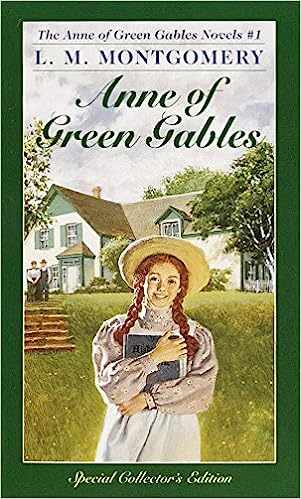What to read when…
…you just need a soft place to go to sleep. Do you have a “comfort” book? Something like mashed potatoes, or macaroni and cheese, or ice cream? A book you read on a bad day but with less calories? Or maybe a book you switch over to when you’re finishing Colson Whitehead’s, The Underground Railroad, and you keep accidentally staying up until 3am? A book that is perhaps a worn-smooth blanket and a soothing voice in your mind that lulls you into dreamland.
I sincerely hope Ms. Montgomery would take no offence that I might describe her story as such comforting reassurance. While a book that puts you to sleep may sound insulting, in the case of Anne of Green Gables, the opposite is true. The storyworld Montgomery creates through Anne’s eyes is one filled with beauty and magic and such hopefulness that the reader can’t help but fall under such a tantalizing spell. It is a young adult novel, which is apparent from the language, characterizations, and plotlines, and that is part of the book’s draw, honestly. In Green Gables, poverty is overcome by love, and death is healed by a few beautifully-written transition paragraphs. Politics get no uglier than a petition to beautify the neighborhood, and racism is non-existent, since, at least in Montgomery’s novel, white homogeny in 1880’s Prince Edward Island is absolute. Ignoring the 100ish black people who lived on the island at the time, the progressively integrated school in the “Bog,” and the racially motivated murder of a mixed-race 16-year-old in 1878 (the accused were acquitted and freed), the closest Montgomery comes to discussing discrimination is the constant teasing Anne endures over her red hair. Anne of Green Gables is a product of its time, one among many in a literary cannon that today’s storytellers are striving to transform with more and more culturally diverse novels that include characters and plotlines that reflect the lived experiences of a much larger “us.”
Even with its faults, I continue to read the book again and again for Anne’s unmovable love and unconditional acceptance of everyone in her life—even those she dislikes. I read it for Montgomery’s ability to describe nature in ways that help me understand that “the world’s beauty (is)…enough” and how “some people could look at a mud puddle and see an ocean with ships” and to remember that “nothing is perfect. Trees can be contorted, bent in weird ways and they’re still beautiful.” As someone who’s bent in more than one weird direction, this book is sometimes all the comfort I need to sleep at night.
Do you have a “comfort” book? I’d love to hear, share it in the comments!
If you’re curious about why we love to reread our favorite books, or rewatch our favorite movies and TV shows, check out this article from “Psychology Today.”
Also, here’s an awesome picture of me around the time I started reading the Anne of Green Gables series:

Follow me on Facebook and subscribe here!
Use this link to find this book in your local indie bookstore (our book-buying choices matter 🙂
